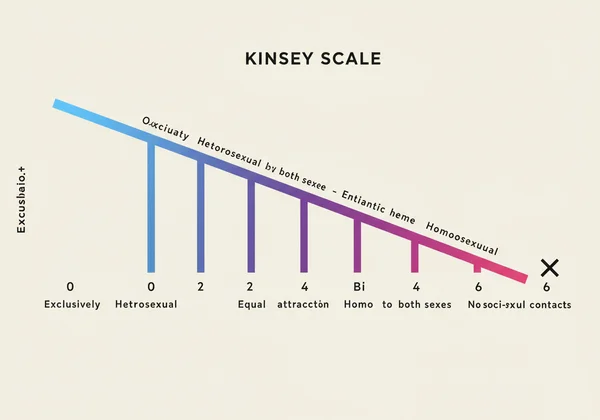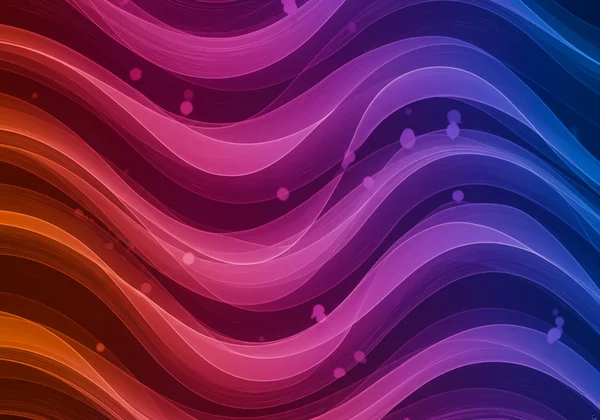Kinsey Scale & Sexuality Spectrum: Understanding Your LGBTQ+ Orientation
Are you questioning your sexual orientation, feeling like traditional labels don't quite fit, or simply curious about the vast diversity of human attraction? You're not alone. We'll explore the groundbreaking Kinsey Scale and the concept of sexuality as a fluid spectrum. How do you know if you're gay when attraction feels more complicated than a simple 'yes' or 'no'? If you're pondering 'am I gay?' or seeking a gay test for self-reflection, understanding these concepts is key to embracing your unique journey of self-discovery. Tools can help you explore your feelings in a safe and private way.
Understanding the Sexuality Spectrum
The idea that sexuality exists on a spectrum challenges the rigid, binary view of being either straight or gay. It acknowledges that human attraction is complex, nuanced, and can be felt in countless ways. This framework provides a more inclusive and accurate way to think about our feelings, validating experiences that fall between or outside of traditional categories. It's not about finding a new box to fit into, but about realizing the landscape of attraction is wide and open.
What is the Kinsey Scale and How Does It Work?
Developed by Alfred Kinsey and his colleagues in the 1940s, the Kinsey Scale was a revolutionary concept. It proposed that sexuality is not an either/or proposition but a continuum. The scale ranges from 0 (exclusively heterosexual) to 6 (exclusively homosexual), with a middle ground (3) representing equal attraction to both sexes. There's also an "X" category for those who experience no socio-sexual contacts or reactions.
The scale works by helping individuals locate their own patterns of attraction and behavior along this spectrum. It was a monumental step in recognizing bisexuality and the degrees of attraction that many people experience. It affirmed that having feelings for more than one gender is a common part of human experience, not an anomaly.

Beyond Kinsey: Exploring Other Models of Attraction
While the Kinsey Scale was pioneering, our understanding of sexual identity has evolved. Modern models offer even more nuance. The Klein Sexual Orientation Grid, for example, expands on Kinsey by measuring attraction, behavior, fantasies, emotional preference, and social preference across past, present, and ideal scenarios.
Other concepts, like the Storms Sexuality Axis, plot hetero-attraction and homo-attraction on separate axes, allowing for a better representation of asexuality and bisexuality. These models help us see that attraction is multidimensional. It’s not just about who you're attracted to, but also about romantic, emotional, and social connections, all of which are part of your unique personal journey.
Sexual Fluidity: Why Your Attractions Can Evolve
One of the most liberating concepts in modern psychology is sexual fluidity. This means your sexual orientation can shift and develop throughout your life. It’s not about being confused or indecisive; it's a natural capacity for change in one's sexual attractions. This idea validates the experiences of many who find their feelings shifting as they grow, have new experiences, and learn more about themselves.
Accepting fluidity can relieve the pressure to find one permanent label. It allows you to honor your feelings as they are right now, without worrying if they will stay the same forever. If you're curious about where you might be on this journey, a free LGBTQ+ orientation quiz can be a helpful starting point for reflection.

Is My Sexuality Fluid? Recognizing Signs of Shifting Attraction
How do you know if you are experiencing sexual fluidity? You might notice these shifts in several ways. You might notice that your attraction to a particular gender intensifies or lessens over time. Perhaps you identified as straight for years but have recently developed feelings for someone of the same gender, or vice versa.
Other signs might include changes in your romantic fantasies or finding yourself emotionally connecting with people in ways you hadn't before. Recognizing these shifts isn't alarming; rather, it's an invitation to explore your evolving self with curiosity. Your feelings are valid at every stage of your life, and this exploration is a courageous step toward self-awareness.
The Power of "No Label Sexuality": Embracing Your Authentic Self
In a world that loves categories, choosing no label sexuality can be a radical act of self-acceptance. For some, labels like "gay," "bisexual," or "straight" feel empowering. For others, they feel restrictive and inaccurate. Embracing a "no label" approach means you are defining yourself by your own experiences, not by a pre-existing term.
This path allows you to live authentically without needing external validation for your feelings. It prioritizes your personal experience over a societal need to classify. It's about being you, in all your complexity. This journey of understanding attraction is deeply personal, and you get to decide what, if any, words you use to describe it.
Navigating Your Journey on the Spectrum
Your journey of self-discovery is uniquely yours. There is no right or wrong way to navigate the sexuality spectrum. The most important part is to approach it with kindness, patience, and curiosity toward yourself. Give yourself permission to explore, question, and simply be without judgment. Remember, this is not a race to a finish line but a lifelong process of getting to know your most authentic self.
Self-Reflection: Tools to Understand Your Attraction
Honest self-reflection is your most powerful tool. Set aside quiet time to think about your feelings. Ask yourself questions like: Who do I fantasize about? Who do I feel a deep emotional connection with? Am I attracted to a person's gender, their personality, or something else entirely? Journaling can be an excellent way to process these thoughts without pressure.
Online resources can also provide a structured way to reflect. Our platform was created by members of the LGBTQ+ community and psychology professionals to be a safe space for this exact purpose. When you're ready, you can start your journey with our confidential gay test, designed to guide your self-reflection.

Finding Support and Community in Your Exploration
You don't have to go through this journey alone. Finding a supportive LGBTQ+ community, whether online or in person, can be incredibly affirming. Connecting with others who have had similar questions and experiences can reduce feelings of isolation and provide a sense of belonging. Look for local LGBTQ+ centers, school clubs, or reputable online forums.
Sharing your thoughts with a trusted friend, family member, or mental health professional can also be immensely helpful. The goal is to build a support system that respects your journey and celebrates you for who you are, wherever you are on the spectrum.
Your Unique Path: Embracing the Spectrum of Sexuality
Understanding the Kinsey Scale and the broader sexuality spectrum is truly liberating. It empowers you to move beyond rigid labels and embrace the beautiful, complex reality of your own attractions. Your feelings are valid, your journey is unique, and remember, you're never alone in your exploration. Be patient with yourself, honor your feelings as they emerge, and celebrate the courage it takes to discover your authentic self. For a private and supportive space to continue this reflection, we invite you to take our self-discovery quiz or utilize our gay test and see what insights you might uncover.
Frequently Asked Questions About Sexual Identity & The Spectrum
Can my sexual orientation change over time?
Yes, absolutely. The concept of sexual fluidity acknowledges that a person's attractions can and often do change throughout their life. This is a normal and valid experience for many people. Your journey is personal, and allowing for change is a key part of self-acceptance.
Is it normal to question my sexuality?
Yes, it is completely normal. Questioning your sexuality is a sign of introspection and self-awareness. Many people, regardless of their age, go through periods of questioning. It's a healthy part of understanding yourself better, and safe spaces like our confidential tool are designed to support that process.
What does it mean to explore your attractions without a label?
Exploring without a label means allowing yourself to experience attraction without feeling pressured to categorize it. It's about focusing on your authentic feelings for individuals rather than fitting those feelings into a pre-defined box. It's a valid and liberating choice for anyone who finds that existing labels don't quite fit.
How do models like the Kinsey Scale help me understand myself?
Models like the Kinsey Scale are valuable because they provide a framework for thinking about sexuality beyond a simple gay/straight binary. They show us that attraction is a spectrum and help validate feelings that exist in the middle. They are not meant to give you a definitive diagnosis, but to serve as a tool for self-reflection and help you get personalized insights into your own unique patterns of attraction.
Disclaimer: This article is for informational purposes only and is not a substitute for professional medical or psychological advice, diagnosis, or treatment. Always seek the advice of your physician or other qualified health provider with any questions you may have regarding a medical or psychological condition.